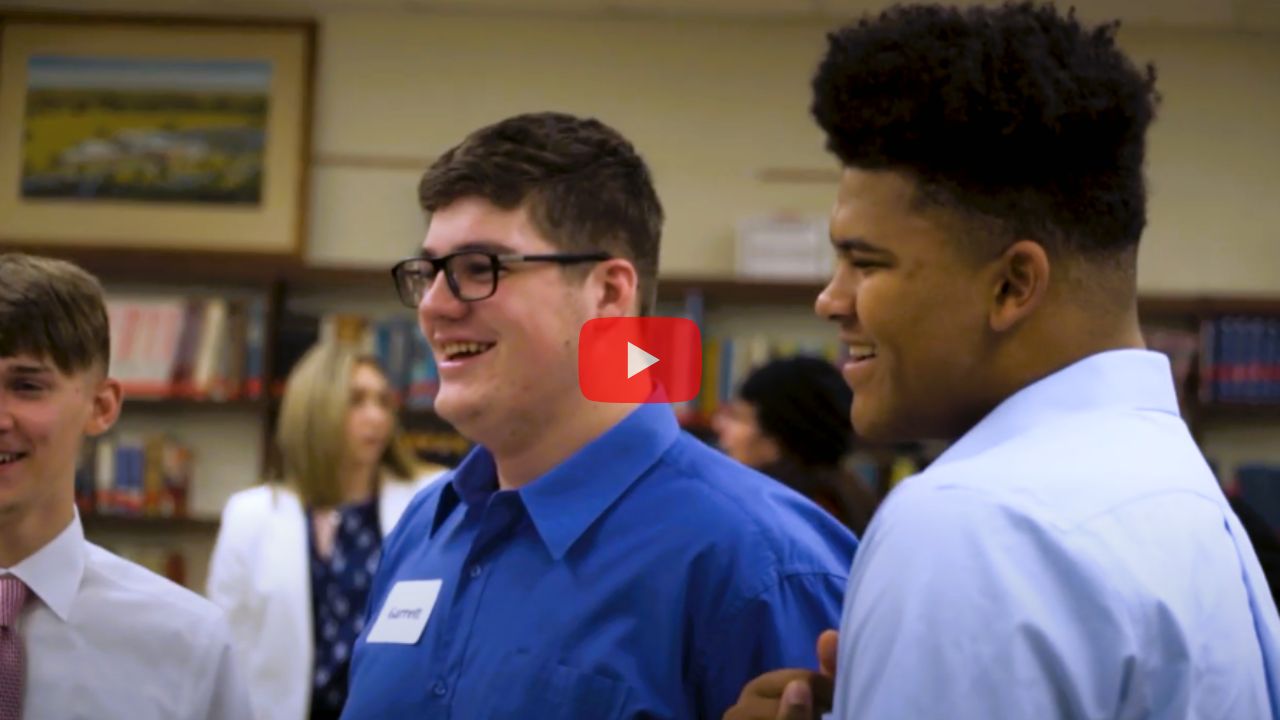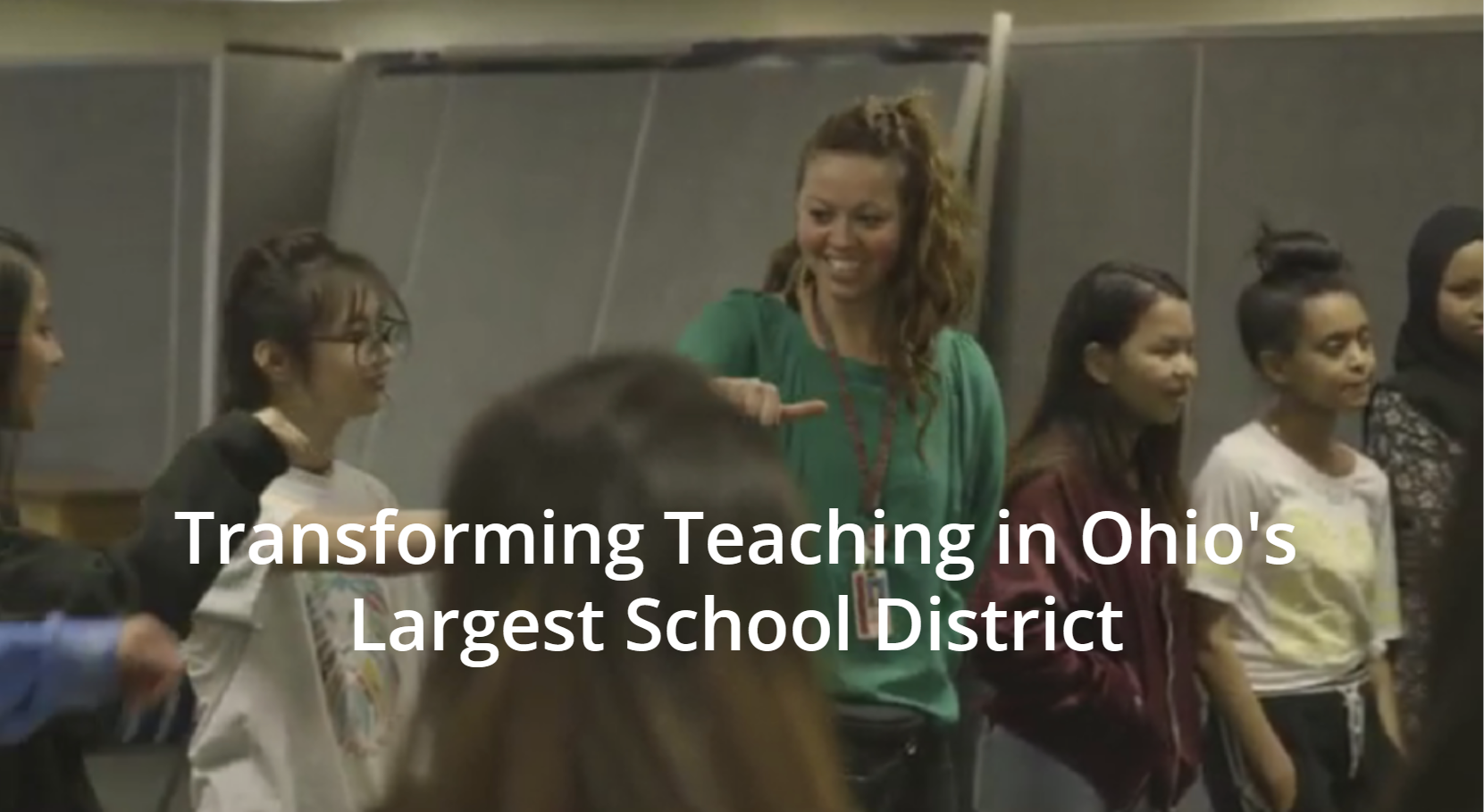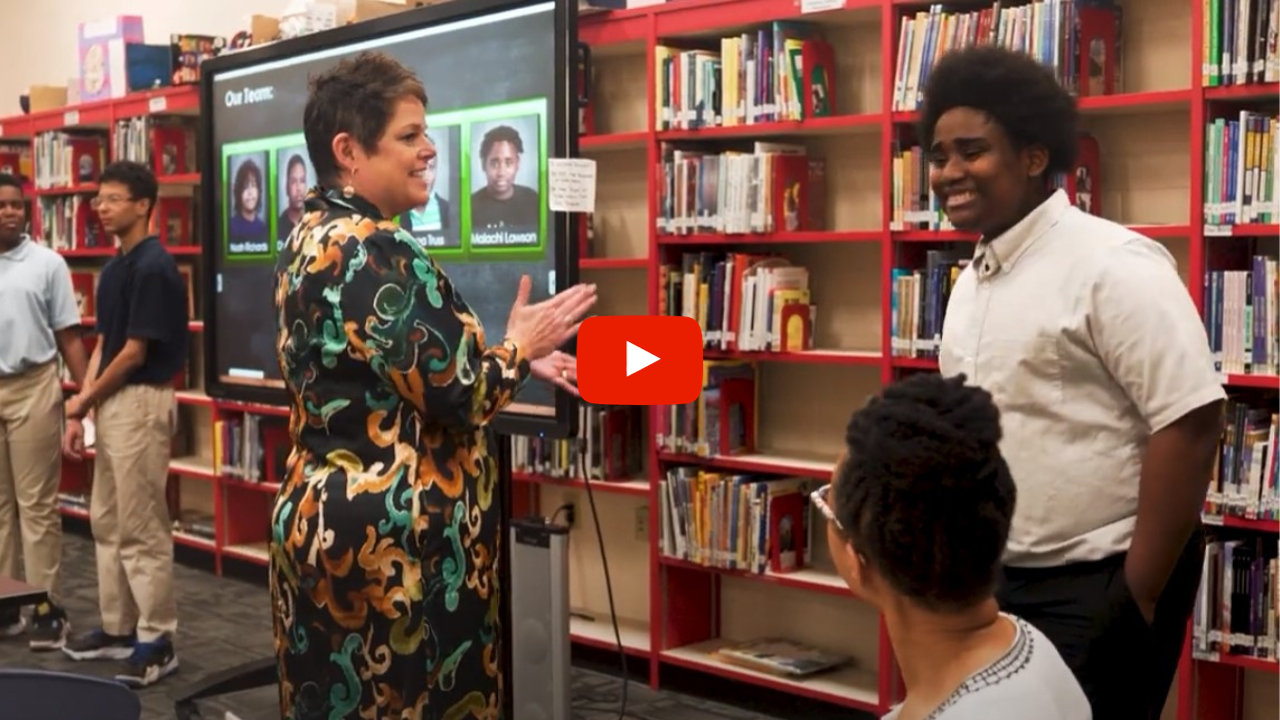In this episode, Doris speaks with Michael Hudecek about the youth entrepreneurship program he developed as Program Manager for St. Clair Superior Development Corporation, an organization devoted to transforming one of the poorest neighborhoods in Cleveland. Michael discusses what he learned in his second iteration of the program. Michael shares his work to spread the method to local schools, including Open Doors Academy, an after school enrichment program for adolescents. Jacquelyn Clemens, Program Manager at ODA, discusses her work to embed this method across the program’s curriculum.
Do School Better: A Podcast for People Who Want to Transform Education - Listen to more episodes here
Doris: Hello, Michael.
Michael: Hi, Doris.
Doris: So I am really interested to hear what you have to say. But if you could start by telling our listeners a little about yourself and why you came to the workshop, to begin with, and what you’ve done with that.
Michael: Sure. So and as you mentioned, my name is Michael Hudecek. I’m gonna be 35 here soon, which is making me feel old.
Doris: Oh, yeah, old, old, yeah.
Michael: Yeah. So I have a political science degree. I never really knew what I wanted to do with my life and ended up having started my own company, kind of deciding I didn’t want to do that anymore and ended up working for a community development corporation in St. Clair, one of the poorest neighborhoods in Cleveland, running a Youth Entrepreneurship Program. And I didn’t have any background in education at the time. I was passionate about entrepreneurship, having just gone through it myself. And I was trying to figure out what this program was gonna look like and our program manager said, “Hey, you’ve got to meet Doris Korda, she’s doing this really cool stuff at Hawken, you should go to her workshop.”
Doris: Yeah and I should say, you know, that before you arrived Burton D. Morgan, here at this foundation locally reached out and asked me to, you know, connected me with James Amendola from St. Clair and said, you know, “I really like you guys to meet,” and that’s when this idea of St. Clair had this idea to create a Youth Entrepreneurship Program and that’s where you came in.
Michael: Yeah, I remember meeting you for the first time in that coffee shop, trying to tease out what your curriculum looked like and being really worried about how things were gonna get set up in three months or so to go before we got started at this point. But again not having a background in education or teaching entrepreneurship, just having done it myself, I was very stressed out about like the meat and potatoes of how this was gonna work, when you said, “Just show up, it’s gonna be fine.”
Doris: That’s right. I remember. Actually, you wanted me to give you, stuff to read. And I said, “Just show up,” right? That’s right.
Michael: Yeah. And to be honest, I read just about every textbook from every other entrepreneurship course I could find in the world.
Doris: I believe it. I believe it.
Michael: Amazon and eBay, buying used textbooks, So I could figure out what’s going on, because…
Doris: I believe it.
Michael: If this lady’s stuff isn’t legit, I need to have a backup plan, right, like the workshops ended four days before my program was ended.
Doris: That’s right. So you came to the workshop and four days after the workshop, your summer six weeks intense immersive entrepreneurship course for these kids was starting.
Michael: Yeah. So and not just any kids mind you. These kids came to us through a collaboration with Youth Opportunities Unlimited which is like a county-wide employment program for young adults in the community and it’s basically a lottery. I didn’t know who the kids were beforehand I didn’t know what schools they were coming from. We were all sort of jumping into this at first with no clue what was going on.
Doris: Yeah.
Michael: Scary on many levels.
Doris: Scary on many levels and I remember you were telling me about that first summer and of course, there’s even, we even have a podcast from the earlier, earlier, season with you talking about what happened in that first one which is really interesting. But now why did you decide to come again and to do it again and what happened there?
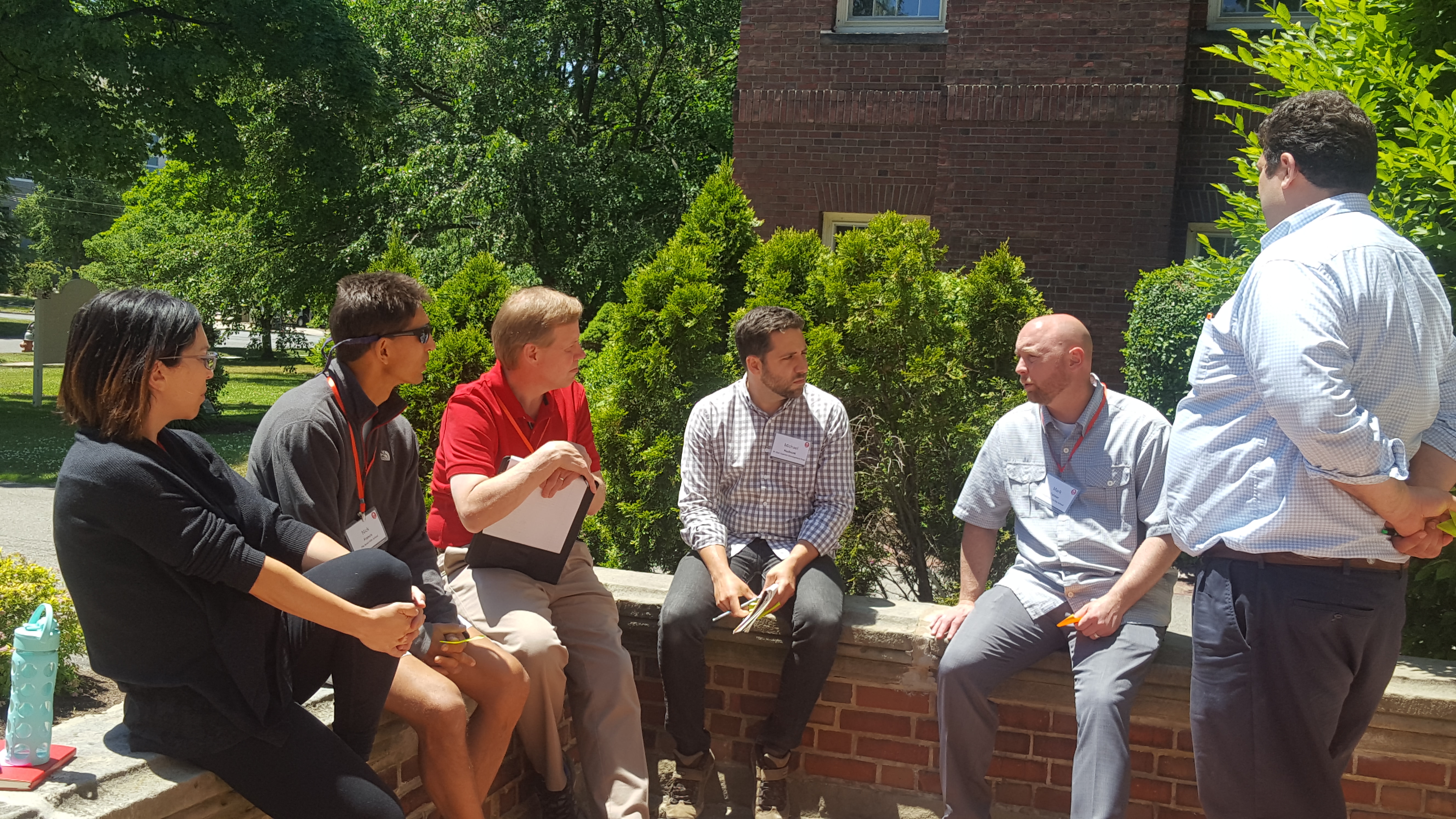

Michael: So the exciting part, on why I got really and why I emailed you to come to the workshop again it was because of the amount of change that took place in six weeks in the kids that I saw. And how they were engaged in a way I’d never seen public school kids, even private school kids, not just engaged but passionate about what to do. And these kids most of them had been given up on from an early age because they were in a public school system in the city of Cleveland. And as long as they graduated without getting expelled or hurting somebody that was like a success story. And I knew that it was my job and my role at St. Clair as entrepreneurship manager working in the youth entrepreneurship space to make sure every possible student I could in the city of Cleveland could touch this program.
And I went to after-school programs and public schools and talked about how amazing this was and they have to go and I made sure that there was either scholarships or money available in our budget and we ended up getting six teachers together from Design-Lab High School, St Martin de Porres, and Open Doors Academy. And I kind of strong-armed my way into coming back by saying I really wanted to make sure that I was able to support them and that I really could benefit from another opportunity to experience this in the workshop.
Doris: Yeah, and I think it was really… But how was it sitting through the workshop a second time? Not that there’s a lot of sitting, but…
Michael: No, but it was great as you would go through the core teaching strategies or show examples of how to engage with your students. At every turn, I was able to recognize was that something I did well last year or was this an opportunity for growth? And being able to take notes and sort of highlight the things that you realized you needed to work on because I’d only done this once and you’re learning on the fly, of course, it’s not going to be great.
And I think reflect on my experience the first time and really pick out the things that I did well and critique the things I didn’t do well and sort of hone in on areas I needed to pay more attention to and you too. I think as adults sometimes we forget that we’re constantly learning by doing. And so having opportunity to return to the workshop and kind of pick up on cues, having gone through it once was really amazing.
Doris: And you’re raising a really important point. So I’m now in the fourth year of doing this with teachers from other schools. I’ve been doing it with teachers from Hawken first and other teachers in my department before that. But you came into this with experience as an entrepreneur and the mindset of an entrepreneur. And that is, about how do I take ideas and turn them into something and experimentation, an attitude of experimentation I’ll call it, is necessary.
And so when you came out of the first one you were wildly excited about the impact on your students and I could see the impact on you and the idea in when we think about how to fix school it’s a completely different world now. The education models that we’ve had up until now it’s well-known they’re not working anymore, given the ways in which technology has changed everything. And we’re in a period now of experimentation, we have to be. We’ve got to come up with a completely new model for school and for teaching and that’s innovation. That’s educational innovation. And that means experimenting and iterating and going again and that’s so not part of the culture of schools. It’s not.
Schools are risk-averse. I was talking the other night about how a lot of what my work is about is creating the conditions for risk-taking. And so I think that’s great. That’s what you were doing and then you came out of this and it was phenomenal to have the six folks that you brought to the workshop. They’re from very different kinds of programs. And now we have pilots going on all over public schools in Cleveland. So you did the workshop again. And then you did the class again. Tell us about the second course and what business have you used, and how you set that up. I’d really like to hear about that.
Michael: We had a woman who’d been in Glenville for 60 years, who ran their family business and closed it down so that she could start an incubation space for young entrepreneurs, just like you can’t write a better story than this, right?
Doris: Yeah.
Michael: Running for council has been a mainstay of your community. She’s trying to do something that would help people in their community. And she grew up in the same neighborhoods that you grew up like there’s a direct connection there and yet that was so much harder for me to build the why does this matter over those two weeks, along with all the other stress of it being the first problem. That the second business owner, who was an Asian guy who ran a bike company walked in with his bike stand, with a $30,000 triathlon bike that won a world championship and his product and all the prototypes that he went through and he sort of talked about this is really important to me, this guy right in front of you, I will fail if you don’t help me.
Doris: Yeah.
Michael: His pitch to the students was all about why he as an entrepreneur had his whole life into this product literally, financially, emotionally, time-wise, everything is tied up into this. And if he doesn’t succeed with this, his family is going to pay the price. And they got that immediately, in a way that even though there was a connection on the first one that seemed so obvious to me and product was great but the amount of work that came out of just that connection to the brand and then why it was important to him and why what they did came back and then even the feedback that he gave was so great. He was just so encouraging and was able to say, “Man, my engineers came up with the same solutions and they did the research and it was so similar like I should just fire my engineering department and just bring you guys in.”
Doris: Well, what I don’t think people haven’t seen it up-close realize is the amount of work and research these students do, even in a two-week timeframe. And it’s a crazy academic topic challenging. So talk a little more about the kids who came this time and what happened.
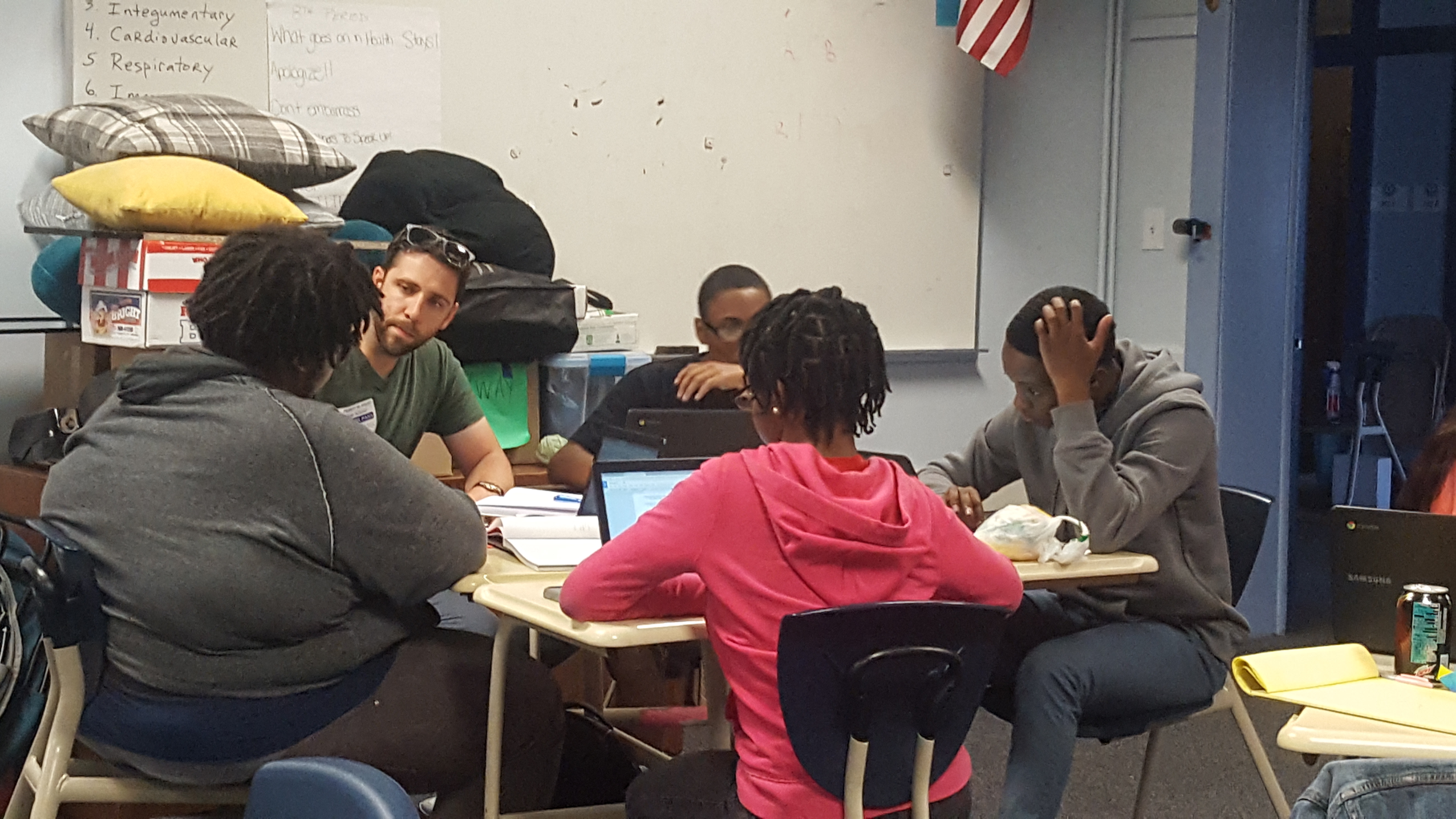

Michael: It was amazing. The student outcomes were the same, just blown away at every turn the amount of growth that happens in just six weeks time. Some of them went from being A students who needed to regurgitate an answer to ones who were excited about the opportunity to be given that space. Some people couldn’t even put their name on a sheet of paper because they were just that socially afraid, like their emotional capacity was just so drained from years of being beat down in school as the “dumb kid” and we’ve talked, I think briefly afterwards, about that interpersonal relationship was really one of the things that I focused on the most this year. Last year, I was so worried about me in many ways in retrospect and my selfishness to want the product, being the presentations to meet a certain standard.
Doris: As a teacher, the first time around you’re focused on making sure oh, my Gosh, are their presentations gonna be good? Which is such a natural…yeah.
Michael: Well, and one of the reasons that it’s important for the students to have real people in the room to listen to them, to put the pressure on that, that also reflects on you the teacher, right? I mean I was hired to make sure the summer program goes well. And there’s a ton of anxiety as an adult that goes along with it as well. And so I spent so much time worrying about, making sure the kids had the right content or their presentation was great. And in the year two, yes, I was still worried about that because I think that’s human nature but I tried to repeatedly remind myself that the good stuff happens when you focus one-on-one or with those groups in a very personal way and you relate to them as people who are in this challenge together, right?
Doris: Yeah. The difference, what I hear you saying is that this time around you really understood that keeping the eye on the ball is not keeping the eye on making sure that they get the content so that their presentation’s good, but keeping the eye on each and every individual student and the growth and learning each one has to do. And if you do that, if that’s the thing you care most about, then the rest it’s gonna be the best learning experience for those guys.
Michael: And again, all of them would say and somewhere I have their blog posted, say this is that they realize the value of it even if at times it was so difficult they left feeling like this matters, this program, even if I don’t get all of the complexity of it, I get that it makes me better positioned in my life, no matter what I do from here on out, whether it’s going back to school, whether it’s pursuing a post-high-school career opportunity, interviewing, whatever I do in life I’m better for having had this experience. Actually, one of the young women that was in the pilot I did the first year, contacted me just before the second one happens, “Okay, can I do this again?”
Doris: Oh, wow.
Michael: It was really amazing to hear her excited about wanting to come back.
Doris: Wow, that’s amazing.
Michael: But you know that’s a testament to how powerful it is. And for the first time, really to have that agency to make decisions in a learning environment, is really powerful for kids. And that was really powerful.
Doris: They’re working on work that matters. It’s real. And they’re coming up with solutions in a team and presenting them to people who know their stuff.
Michael: I think the importance of setting up the structure of the class in a way, in which, it’s iterative and they can try and fail and experience that and sort of get back up, but also making sure that the problems are real and that you do your best to convey why it’s important to them. And if it wasn’t that they were concerned about the CEO, they recognize that they were getting to do some cool stuff and learning about an industry they might have no otherwise like thought about, let alone dug so deep that they understood the spectrum of car bike racks out there.
Doris: You know, it’s not a secret that I’m a ridiculous idealist. But I really do believe what John Dewey said, that people are innately interested and curious and that learning itself is something that people are wired to love. He said it much more eloquently than I’m saying it. And that if you as a teacher your job is to engage a student with their interest. And I’ve always felt you get them to trust you. And then you capture their interest and their imagination, the learning will come. And I think this is the first podcast I’ve quoted Dewey because I always hold myself back but I can’t listening to you. You know, he said as teachers you don’t have to engage in trickery. They know when they’re really engaged in the learning and they’re growing from that. Did you feel that with these guys?
Michael: Yeah, absolutely. And I think you say it all the time. It’s you stopping telling them what they need to learn and you give them the space to learn the stuff they need to learn and the skills to get there.
Doris: Yeah.
Michael: And if you create the right problem, the learning comes with it. And so I could get up there and talk about target market as much as I’m blue in the face, but until they have to explain to a CEO why they chose this product instead of the other product that they were considering, it’s totally irrelevant to them. It’s like a vocabulary word that they’re never gonna use.
Doris: So Michael, when you think about teachers taking something like this on for the first time, which is a very scary risky thing, what are some of the things that you wish you’d understood before you were really nervous going into it the first time? What were some of the things you wish you’d understood going into the first one?
Michael: I think the first one is forget what you want the kids to learn. And learn more about the kids.
Doris: That’s awesome.
Michael: Slow yourself down and talk to them and have a dialogue both in teams and one-on-one as much as you can. If that means you talk to every kid for two minutes every day or twice a week or whatever the time allows, do it as much as you can. One, the more engaged and the more you understand them, the more they trust you and the more they’re gonna open up and the better the learning will be because they’ll take more risks, because they feel safe. And it will also get you out of your selfish concerns that they’re not learning content, right? Because we, as adults, we are always judged by the end product. And we’re not encouraged despite everybody talking about it to take risks or try things out and fail and learn from that failure.
We’re just supposed to know right away. And I think one of the powerful things as an adult is this is really about creating that same safety that you’re trying to provide for the kids as an adult and remembering like you’re never gonna nail it the first time. I’ve never done this before. I just have to go out there and do the best I can. We talked about that four-day turnaround after the first pilot and even a year later having just gone through it again I had four more days from the workshop, revisited to take things away and then start over. And I messed up a lot of things again and you too and that’s okay.
Just even talking to you now I’m remembering all the things I would do differently the next time. And it’s building in a way and you talked about scaffolding some time and it’s scaffolding the student growth and it’s remembering to scaffold yourself along the way and not expecting to have eternal power from day one. But then you know, if you build a few bricks, that’s a great pilot and that’s okay. And step away and let it be messy because the messiness is where the good stuff ends.
Doris: Yeah. And you’re right. We use the words a lot now about risk-taking and failure and all of that, but the reality is that that is messy and it hurts and we’re not used to it and we avoid it at all costs.
Michael: Yeah and that makes me think too like people always ask like, “What does this look like, what’s the curriculum?” and kind of the point is that it’s really about what do you want the students to learn like you always say, “What’s your learning objective? Let’s start there and build backward.” And no matter how many times you go to a workshop, if you don’t know the box that you have to play with, that you’re a certain school or after school program you’re never gonna be successful because this isn’t and life isn’t about one size fits all solutions. It’s really about taking the time to be thoughtful and tailor things to make sure that it’s the best experience you can provide today. Next year, it’s gonna be a little better and growing organically from that.
Doris: Right. That’s right. As a teacher, you need the tools, but you’re the designer.
Michael: Absolutely.
Doris: And you have to know what you have on your palette. So, Michael, it’s really exciting.
Michael: It’s always great to talk to you, Doris.
Doris: Yeah, same here. One of the educators that Michael brought with him the second time he came to the workshop was Jackie Clemens. Let’s hear what she designed and what she’s doing next at Open Doors Academy.

Jackie: So I actually went to school for public health. I did my final project on homeless use and depression and PTSD. And that is where my first job was. And there I learned a lot. And it was really intense and definitely health-oriented and prevention-based. But I found my passion was just a lot earlier. I did Pre-K for a quick minute. And then I got involved with Open Doors Academy, which is middle school and high school. And that’s where I’ve been since I’ve been in Cleveland.
So we’re an out of school enrichment program. So not a daycare, not a hangout session, we are an academically-based program. We do one-on-one mentoring and coaching with the kids. We’re in the different schools throughout the entire city. We are offering curriculum-based work where the kids are exploring, health and wellness, arts and culture, global social education and then, of course, the school stuff, like tutoring and homework time, things like that.
So I was primarily working with middle school kids. And I had this opportunity over the summer to get a group of high school kids together and try this entre experience out. I have a nice small group. We started off with a nonprofit. We partnered with Negative Space, an art gallery. So it was tough for them to figure out where to start and even understanding the nonprofit. When we were in the initial interview with Negative Space, they were so profit-oriented. When kids tend to think about business it’s like money, my money but it was awesome to sort of see that made that shift and really delve into understanding people, wanting to do things because it’s important. And they’re passionate about it and the business wanted to grow and they wanted to be able to reach more kids, open up more programs and expand their social media presence.
And so the kids had to figure out how do all these things tie together, what are best practices that other places are doing, what are they doing well, how are they making it happen, how are they reaching a broader population. And that’s they did a lot of their research on. In traditional education that’s saying, “Hear my voice, memorize my words, regurgitate and repeat,” isn’t really leaving the kids much room to develop a sense of personal drive. In the real world, you don’t have someone saying, “Okay, here’s your next step.” So it’s hard for them to adjust. And it’s honestly just as hard for the teachers or staff or whomever to adjust too because it’s truly a mindset. But once the kids get into that place and that rhythm, they adapt.
I actually have a quote from one of the kids that I think explains it the best. She had some challenges, to say the least, and was very confused, did not have much like personal drive. And so this will start to paint the image with where we ended on our last day. So she said, “My growth from day one to the end of week three has increased by a thousand, because in the beginning, I was extremely shy and honestly, didn’t wanna do anything because it was hard. Once the second week was almost over I gained confidence. I was still a little shy but realized I couldn’t really change that. I’m really glad I went to this camp because it boosted my intelligence and the things you never knew about grew from a little to a lot and that being an entrepreneur is over the top tough.” So she found a way to overcome obstacle after obstacle and after her group presented and the amount of pride she had, you could see it in all the kids basically. They were just so proud.
So Open Doors Academy shifted their model for high school. And one of the major things that they’re gonna be integrating is this program called Global Education Intercultural Fluency. The kids will work in groups and delve into research about something that feels real to them. And then they’re going to implement a solution, whether it’s local right in their community or beyond.
So traditionally, some of the global education workshops were once a month and it was like oh, it’s brilliant speakers, let’s talk about it, maybe we’ll do some volunteering. And I’m not saying that that doesn’t have its place or the kids can enjoy it, but again this process is about putting it back on the kids and letting them, creating the drive and guide where they want to go with it and what they want to do and making it really meaningful and then conveniently enough, they’re developing all these skills along the way. All too often kids don’t get to taste this drive for lifelong learning really on their own. Oh, good, I got an A on this test, great. Mom hangs it up on the fridge, but to have something that feels so real that you built from level zero and then present in this grown-up adult way it brings them into the future with a sense of empowerment.


